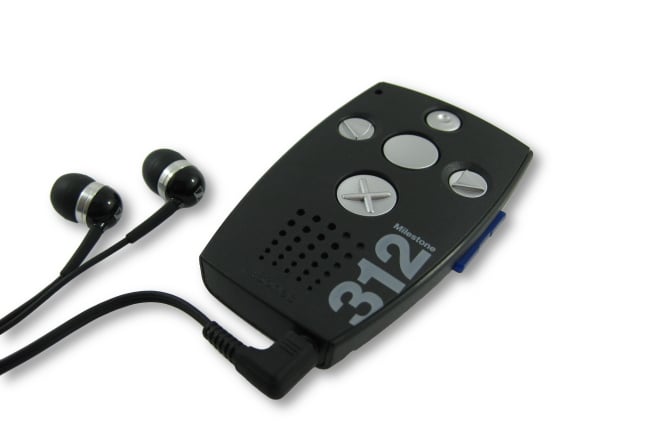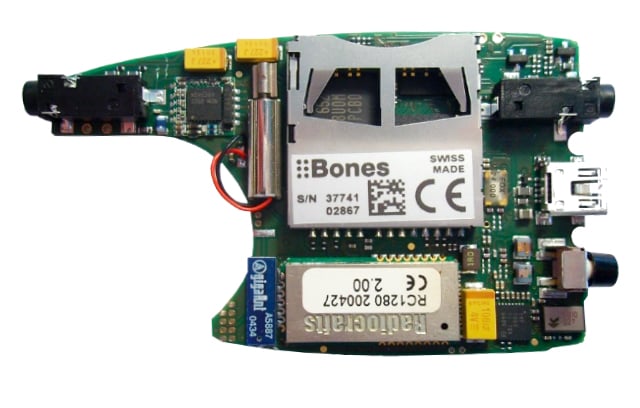Bones
“IAR Embedded Workbench delivers good quality code and an excellent debugging environment at a reasonable price."

Embedded technologies enhance daily life for persons with disabilities
Bones Inc., a Swiss company, evolved from an inspiring phone call in 2003. Stephan Knecht had resigned from his job in management consulting and was randomly calling companies and organizations for business ideas. The Swiss association for the blind and visually impaired immediately put him on the right track by providing detailed descriptions of necessary products for making society accessible in ways that most people take for granted.
A voice recorder became the first device in the Bones product line. Today, Bones sells various devices (about 10,000) from its line of assistive technologies for the blind and visually impaired. The company is dedicated to serving a target group that requires usability beyond the ordinary.
"In 2003, we had bi-weekly meetings with members of the association," says Stephan Knecht, CEO of Bones Inc. in Neuhausen, Switzerland. "They explained to me what this market sector needs."
 Weighing in at 49 grams and loaded with functionality, the Milestone 312 is a portable device contains recording and speech playback functions, music, and audio books—not so impressive compared to MP3 players available in stores. But if you carefully read the functions and features list, you quickly realize that this isn’t an ordinary device. For example: text files are read out loud using synthetic speech. An ingenious RFID technology application enables object tracking within the home. And a portable color reader connected via the USB on-the-go interface tells blind users the color of an object, which is particularly useful when deciding what to wear.
Weighing in at 49 grams and loaded with functionality, the Milestone 312 is a portable device contains recording and speech playback functions, music, and audio books—not so impressive compared to MP3 players available in stores. But if you carefully read the functions and features list, you quickly realize that this isn’t an ordinary device. For example: text files are read out loud using synthetic speech. An ingenious RFID technology application enables object tracking within the home. And a portable color reader connected via the USB on-the-go interface tells blind users the color of an object, which is particularly useful when deciding what to wear.
Enabling usable, useful features and functions for varying needs
Users must able to rely on hearing and sensing to browse file structures and get access to features and functions. That’s why radio-frequency identification (RFID) and other technologies are needed. For example, instead of displays, Bones devices contain synthetic speech and big buttons in distinctive shapes.
During development, close cooperation with user groups (via meetings and system tests) ensures that final products meet customers’ requirements. Usability is everything.
Milestone 312 includes audio playback and recording, SD card, NAND flash, FM tuner, RFID recognition, real-time clock, and a USB on-the-go interface.
Here’s is an example of one RFID application: An RFID tag is attached to an object for identification. It’s an aid, for example, for identifying individual CDs piled on a coffee table or on a shelf. The tags’ serial numbers give every CD a unique ID. Users record an oral description of each CD into Milestone 312. The corresponding description is played in the earphones when scanning the CD with Milestone 312.
“The voice recorder associates the message with the serial number,” says Knecht.
Bones Inc. is one of the four leading companies that offers similar types of products to blind and visually impaired persons. And Knecht is well aware of the competitive edge in his company’s products.
“We offer the smallest, loudest products with the most powerful speaker. Device operations are the simplest, and batteries have the longest runtime.”
Choosing IAR Embedded Workbench
Bones Inc. uses IAR Embedded Workbench for ARM to develop software. The programming language is C. The CMX RTOS is used in Milestone 312 software.
According to Knecht, the company chose IAR Embedded Workbench for several reasons: “IAR Embedded Workbench delivers good quality code and an excellent debugging environment at a reasonable price. We think that usage is very transparent. And functionality is accessible and easy to find.”
For Knecht, good-quality code is code that’s free from bugs—code that efficiently uses scarce microprocessor resources and memory—code that saves power through efficient use of onboard resources.
“We’ve found that IAR Embedded Workbench compiles code intelligently in terms of code size and speed. Often, these two factors go hand-in-hand.”
Milestone 311, predecessor of Milestone 312, was well received among customers. But a new product generation—based on a revised design strategy—had to be developed to meet future needs.
“Milestone 311 had many functions realized in hardware, and we had to move them into the software to guarantee flexibility.”